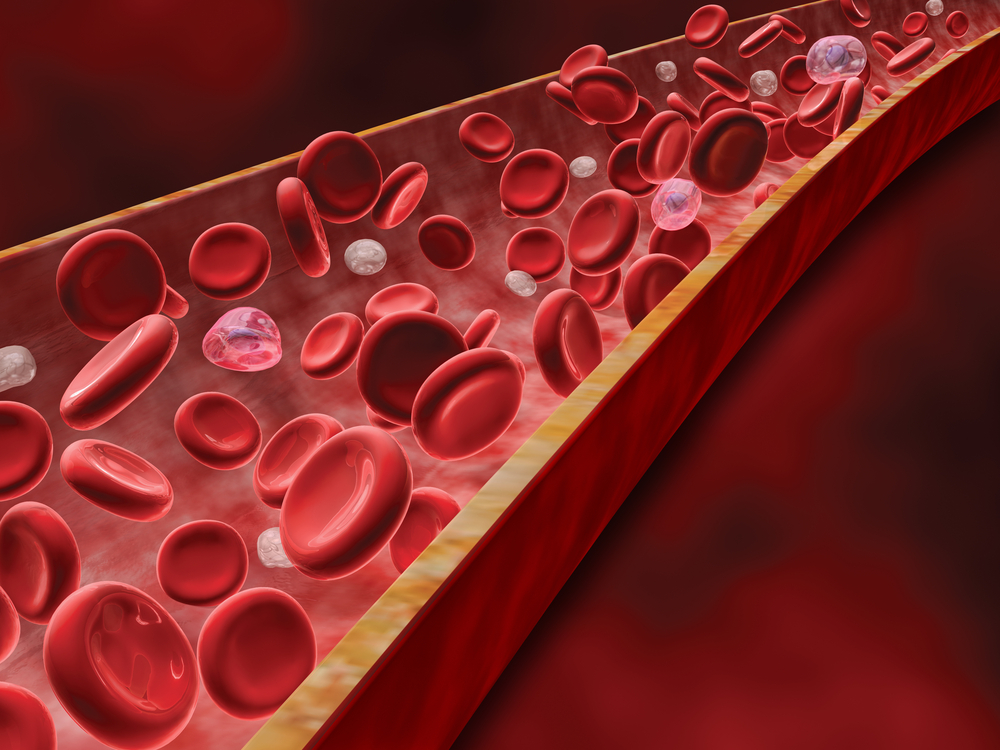Changes in Blood Cell Ratios Linked to Worse Outcomes
Written by |

Idiopathic pulmonary fibrosis (IPF) patients showing greater changes in blood cell ratios often used as markers of inflammation are at higher risk of lung function decline, respiratory hospitalization, and death, according to a post-hoc analysis of data from several Phase 3 clinical trials.
Notably, these associations were more pronounced in trial participants assigned to a placebo than among those given Esbriet (pirfenidone), suggesting that these blood cell ratios may be less suitable as predictive biomarkers for patients receiving treatment.
Given that blood cell counts already are a routine assessment in clinical monitoring, these ratios may represent readily available biomarkers of disease progression among these patients. Yet, as noted by researchers, more studies are needed to confirm their predictive value.
Findings were reported in the study, “Changes in Neutrophil–Lymphocyte or Platelet–Lymphocyte Ratios and Their Associations with Clinical Outcomes in Idiopathic Pulmonary Fibrosis,” published in the Journal of Clinical Medicine.
“Identification of prognostic and predictive biomarkers could have multiple uses in IPF, including the assessment of risk and disease severity, the prediction of progression and response to treatment, and the measurement of treatment responses,” the researchers wrote.
The neutrophil–lymphocyte ratio (NLR) and the platelet–lymphocyte ratio (PLR) have been used as markers of inflammation, with higher values being associated with worse outcomes in several conditions, including inflammatory diseases, cardiovascular disorders, and multiple cancers.
While both neutrophils and lymphocytes are immune cells, neutrophils are known to have pro-inflammatory properties and to contribute to the early stages of wound repair and scarring (fibrosis). In turn, platelets are the blood cells responsible for promoting blood clotting to prevent excessive bleeding.
A previous study showed that a higher NLR was associated with a greater risk of death in IPF patients and that this ratio could be reduced with antifibrotic treatment. This suggested that NLR could be used to monitor treatment response in this patient population.
Now, researchers at Roche’s subsidiary Genentech and at two U.S. institutions, evaluated the potential association between NLR or PLR and clinical outcomes over one year in IPF patients, by conducting a post-hoc analysis of data from previous Phase 3 trials.
Their goal was to “pave the way for further research into the value of NLR and PLR as potential prognostic or predictive biomarkers in IPF.”
The first analysis included 1,334 patients who received either Genentech’s Esbriet (710 patients) or a placebo (624 patients) in the ASCEND (NCT01366209), CAPACITY 1 (NCT00287729), and CAPACITY 2 (NCT00287716) studies.
For each treatment group (Esbriet or placebo), patients were divided into four groups, based on their NLR or PLR at study start (baseline).
The team then investigated a potential link between patients’ baseline NLR and PLR, as well as ratio changes over a year, with several clinical outcomes at one year of treatment, such as all-cause mortality, lung function decline, lower exercise capacity, worse shortness of breath, and respiratory hospitalization.
Results showed that in the placebo group, baseline NLR was associated significantly with patients’ all-cause mortality and exercise capacity decline or death, while PLR was linked to reduced exercise capacity or death.
In Esbriet-treated patients, significant links were identified for reduced lung function and exercise capacity or death, and worsening of shortness of breath or death and baseline NLR.
In addition, changes in either NLR or PLR among patients receiving a placebo were associated significantly with all evaluated outcomes; patients with greatest changes over one year experienced the worst outcomes.
Notably, significant associations among Esbriet-treated patients included only lung function decline and respiratory hospitalization or death for NLR, and none for PLR.
“These findings indicate that NLR or PLR change could potentially be a more robust prognostic biomarker than baseline NLR or PLR alone, but may be less suitable as a predictive biomarker for patients receiving treatment,” the researchers wrote.
In addition, changes in NLR were driven by both higher pro-inflammatory neutrophil and lower lymphocyte counts, while PLR changes appeared to be mainly driven by reduced lymphocyte counts than increased platelet numbers. This suggests that NLR could be a better ratio to monitor than PLR, and also supports the notion of a systemic inflammatory state in people with IPF, the team noted.
These findings were validated for all-cause mortality using data from patients who received a placebo in the GIPF-001 (NCT00047645) and GIPF-007 (NCT00075998) studies of interferon gamma-1b.
While interferon gamma-1b failed to show any clinical benefits in these trials, the researchers opted to include only patients in the placebo groups, since the therapy is known to affect blood cell production.
Analyses showed that a significantly greater proportion of patients with the highest NLR or PLR changes over one year died from all causes, compared with those who had smaller changes.
These findings suggest that IPF patients with the greatest NLR or PLR change over one year “may be at the highest risk of poor outcomes, including mortality, respiratory hospitalization, and declines in lung function, [exercise capacity] and quality of life,” the researchers wrote.
“Unlike gene or protein signatures, blood cell counts are already a routine part of clinical monitoring and would therefore be easier to adopt in clinical practice without the need for additional testing or incremental cost,” the team added.
More studies are needed to clarify the potential value of neutrophil–lymphocyte and platelet–lymphocyte ratios as prognostic or predictive biomarkers for outcomes among people with IPF.






